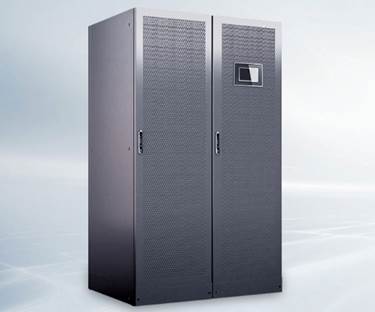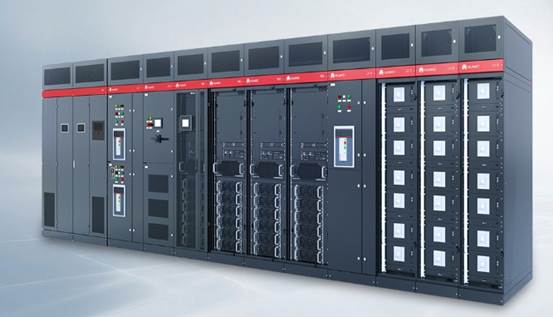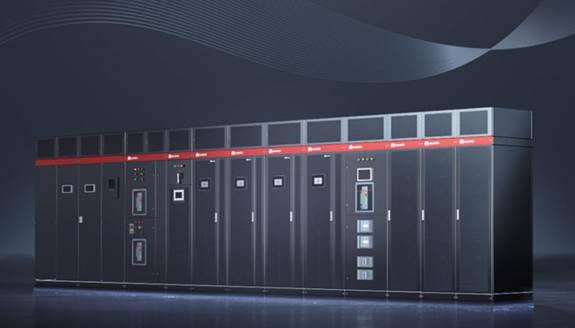Power
reliability remains the foundation of data center operations, where even
momentary interruptions can disrupt critical services and damage equipment.
Modern uninterrupted power supply (UPS) systems have evolved far beyond simple battery backups,
incorporating groundbreaking technologies that enhance efficiency, reliability,
and sustainability. Today's innovations address pressing challenges like energy
costs, space constraints, and environmental impact while delivering smarter
power management. In this article, we'll explore the most significant UPS
advancements transforming data center infrastructure, from revolutionary
battery chemistries to AI-driven predictive maintenance and space-saving
modular designs.
How Are Battery Technologies Revolutionizing UPS
Systems?
Lithium-Ion vs. VRLA: The New Battery Standard
The
shift from traditional valve-regulated lead-acid (VRLA) batteries to
lithium-ion solutions represents one of the most impactful UPS advancements.
Lithium-ion batteries offer three to five times longer lifespan than VRLA,
dramatically reducing replacement frequency and maintenance costs. They also
charge significantly faster - while VRLA systems may need eight hours to fully
recharge after an outage, lithium alternatives like Huawei's SmartLi can
achieve 90% charge in under two hours. This rapid recovery provides better
protection against consecutive power events. Additionally, lithium batteries
maintain consistent performance across wider temperature ranges, reducing
cooling energy demands in data centers. Their compact size (up to 60% smaller
footprint) allows either higher capacity in the same space.
Faster Charging and Longer Lifespans
Modern
lithium batteries achieve their extended longevity through advanced battery
management systems (BMS) that precisely control charging parameters. Unlike
VRLA batteries that degrade quickly when deeply discharged, lithium systems
tolerate regular 80-90% depth of discharge with minimal impact on lifespan.
Some next-generation designs now incorporate lithium iron phosphate (LiFePO4)
chemistry, offering even greater thermal stability and cycle life. These
improvements translate to lower total cost of ownership despite higher initial
prices. For example, where a data center might replace VRLA batteries three
times over ten years, lithium systems often last the entire UPS lifespan with
just one installation, eliminating multiple replacement labor costs and disposal
fees.
Thermal Runaway Prevention & Safety Advances
Safety
concerns initially slowed lithium battery adoption, but new technologies have
addressed these effectively. Modern systems incorporate multiple protection
layers: cell-level fuses prevent overcurrent, ceramic separators resist thermal
penetration, and sophisticated BMS continuously monitors temperature, voltage,
and current. Huawei's SmartLi solution adds AI algorithms that detect subtle
performance deviations indicating potential issues long before problems emerge.
Advanced ventilation systems and fire-resistant cabinet designs contain any
thermal events, while some models now use non-flammable electrolytes. These
innovations have made lithium UPS batteries safer than traditional VRLA in many
aspects, as they don't emit hydrogen gas during operation and maintain stable
chemistry under stressful conditions.
What Role Does AI and IoT Play in Modern UPS?
Predictive Maintenance with Machine Learning
Artificial
intelligence transforms UPS maintenance from reactive to predictive by
analyzing operational data to forecast component failures. Modern systems track
hundreds of parameters - from capacitor health to fan bearing wear - using
patterns invisible to human operators. For instance, a slight increase in
harmonic distortion might indicate impending inverter issues, while gradual
battery capacity loss could signal needed replacement months before failure.
Huawei's smart power supply solutions employ these techniques, reducing
unplanned downtime by up to 80% in some implementations. The systems
automatically generate maintenance tickets when anomalies appear, allowing
repairs during planned outages rather than emergency situations.
Real-Time Load Monitoring & Automated Adjustments
IoT-connected
UPS systems now dynamically adjust operations based on real-time power
conditions and load requirements. Smart sensors continuously measure incoming
power quality, output demand, and environmental factors, making
micro-adjustments to maximize efficiency. During periods of stable utility
power, systems might switch to high-efficiency modes, then instantly engage
full protection when anomalies occur. Some advanced models automatically
balance loads across multiple units, preventing any single UPS from approaching
capacity limits. This intelligent load management not only improves energy
efficiency but also extends equipment life by preventing stress from uneven
power distribution. The result is both lower operating costs and enhanced
reliability without requiring constant human oversight.
Cloud-Based UPS Management Systems
Centralized
cloud platforms now enable remote monitoring and control of distributed UPS
systems across multiple data centers. Administrators can view real-time status
dashboards, receive automated alerts, and even perform diagnostics from any
location. These systems aggregate historical data to identify trends, optimize
configurations, and generate compliance reports. Some platforms integrate with
broader data center infrastructure management (DCIM) solutions, allowing
coordinated responses between power, cooling, and IT systems during incidents.
For global organizations, cloud management provides standardized visibility
across regions while reducing the need for on-site technical staff at each
facility.
How Are UPS Systems Becoming More Energy Efficient?
Eco Mode and Dynamic Online Hybrid Designs
Modern
UPS systems achieve unprecedented efficiency through innovative operating
modes. These systems continuously monitor input power quality, instantly
engaging full protection when needed while minimizing energy loss during stable
conditions. Some advanced models now employ variable-speed inverters that
adjust their operation to precisely match load requirements, eliminating fixed
overhead losses. These efficiency gains directly reduce data center PUE (Power
Usage Effectiveness) while lowering electricity costs - particularly important
as power demands continue rising.
Reduced Footprint with High-Density Components
Next-generation
UPS designs pack more capacity into smaller spaces through advanced power
electronics and cooling techniques. The PowerPOD exemplifies this trend,
integrating medium-voltage transformation, distribution, and UPS functions into
a single compact system. High-density power modules, like those in Huawei's
UPS5000-H series, deliver 120kVA in just 3U of rack space - a 40% size reduction
over previous generations. This consolidation saves valuable data center floor
space that can instead generate revenue through additional IT equipment.
Smaller footprints also reduce material usage in construction and decrease
cooling requirements due to reduced heat dispersion areas. Some modular systems
now achieve 1MVA capacity in a single rack, unheard of just five years ago.
Waste Heat Reuse and Liquid Cooling Options
Innovative
thermal management approaches are turning UPS waste heat from a liability to an
asset. Some facilities now redirect UPS exhaust to supplement building heating
systems during colder months. More advanced implementations use heat exchangers
to transfer thermal energy to nearby water systems, reducing overall facility
energy demands. Liquid-cooled UPS designs, while still emerging, promise even
greater efficiency by directly cooling components with non-conductive fluids.
These systems operate at higher densities with lower fan energy consumption and
reduced acoustic noise.
What Modular UPS Innovations Are Emerging?
Scalable Power Capacity On-Demand
Modular
UPS architectures revolutionize capacity planning by allowing incremental power
additions aligned with actual growth. Traditional monolithic systems often
force overprovisioning - purchasing 500kVA today for needs that may take years
to materialize. Modular solutions like the UPS5000-E series enable starting
with 30kVA and adding 30kVA modules as required, paying for capacity when
needed rather than in advance. This "right-sizing" approach improves
capital efficiency while ensuring adequate protection at every stage. Some
systems now support mixed module sizes within the same chassis, allowing
fine-tuned capacity adjustments to match irregular load growth patterns common
in modern data centers.

Hot-Swap Modules for Zero Downtime Upgrades
The
ability to replace or upgrade components without system shutdowns has become a
hallmark of modern modular UPS designs. Faulty power modules, control units, or
even entire battery strings can now be removed and replaced while the UPS
continues supporting critical loads. This capability transforms maintenance
from scheduled downtime events to routine operations with no service
interruption. Advanced systems incorporate automatic load redistribution when
modules are removed, preventing any single component from being overloaded
during maintenance. Some designs feature tool-less module replacement, allowing
swaps to be completed in under five minutes - crucial for maintaining
availability in always-on digital infrastructures.
Microgrid Integration for Renewable Energy
Next-generation
UPS systems increasingly function as key components in facility microgrids
rather than isolated backup systems. Modern designs can seamlessly transition
between utility power, on-site generation (like solar or fuel cells), and
battery storage while maintaining clean power to critical loads. Some now
incorporate bi-directional inverters that allow UPS batteries to participate in
demand response programs or provide grid stabilization services. This
integration helps data centers maximize renewable energy usage while creating
potential revenue streams from grid services. The PowerPOD architecture
exemplifies this trend with its ability to integrate multiple power sources and
storage systems into a unified, intelligent power ecosystem.

Conclusion
The
latest UPS technologies offer data center operators unprecedented opportunities
to enhance reliability, reduce costs, and improve sustainability. From
lithium-ion batteries that last the entire facility lifecycle to AI-driven
predictive maintenance that prevents unexpected failures, these advancements
represent more than incremental improvements - they fundamentally transform
power protection strategies. Modular architectures provide the flexibility
needed in rapidly evolving digital infrastructures, while breakthrough
efficiency gains directly impact operational expenses and environmental
footprints. As data centers face growing power demands and sustainability
pressures, adopting these innovations will separate future-ready facilities
from those struggling with obsolete power systems.



